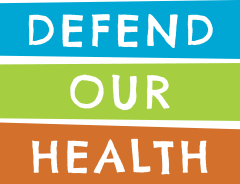The Impact of Toxic Emissions on Respiratory Health
April 5, 2024 | Clean Air, General Updates | Tags: clean air, Defend Our Health, environmental health, Environmental Justice, grassroots organizing, Toxic Chemicals
Breathing is so second nature to many of us that you may think less about how your respiratory system works and what constitutes a threat to your health. In honor of Respiratory Care Week, we are diving into the impact of toxic emissions on respiratory health!
Respiratory Care Week takes place from April 7th to April 13th and is an annual event to honor and recognize the invaluable contributions of respiratory therapists to patient care. Respiratory therapists handle many respiratory illnesses, many of which are linked to air pollution and toxic emissions.
According to a report published in the National Library of Medicine, environmental air pollution directly impacts human health. It is responsible for an increase in the number of deaths due to cardiopulmonary, neoplastic, and metabolic diseases. Other chronic impacts include increases in asthma, COPD (chronic disruption pulmonary disease), and lung cancer, as well as a rapid decline in lung function.
Children are particularly vulnerable to air pollution from the womb to adulthood. Air pollution can cause low birth weight, asthma, reduced lung function, respiratory infections, allergies in children and adolescents, and increased risks of adult chronic diseases.
The health impact of air pollution also disproportionately affects communities of color, according to a paper published by researchers at George Washington University. Communities of color in the United States experience 7.5 times higher pediatric asthma rates and 1.3 times higher premature mortality rates due to these pollutants compared with primarily white communities.
Low-income communities and communities of color bear the weight of toxic air pollution, and the tax is their health. In a report released by Defend Our Health last year, we detailed the health impact of plastic production emissions on communities of color. We found that the health burden of PET plastic production falls disproportionately on low-income and communities of color, mainly in the Gulf Coast and Southeast US, with 64% of residents in the U.S. facing serious cancer and respiratory risks are people of color.
